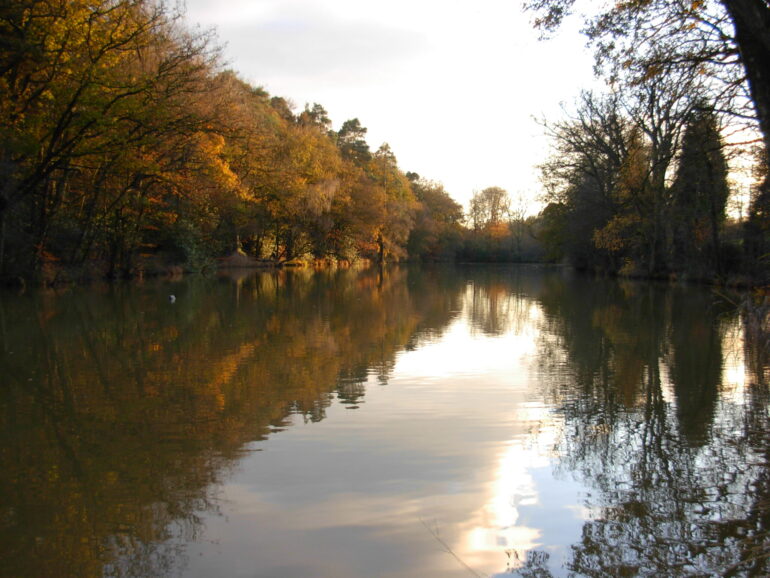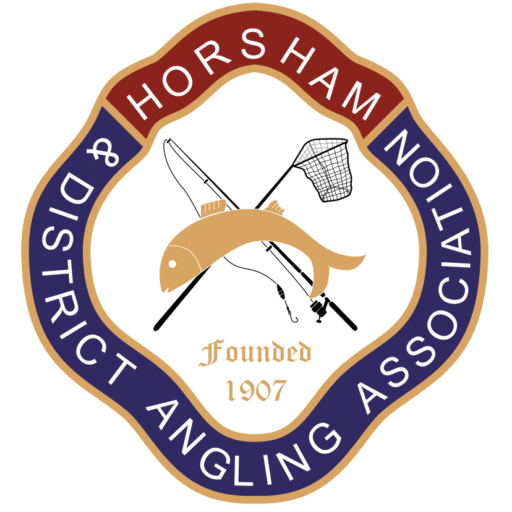
Roosthole: water quality survey and planned work
In August this year the committee instructed the AGA Group Consultancy Ltd to complete a water quality survey and report on Roosthole Pond to help the club form a strategy of waterbody improvements and management, particularly focusing on mitigation of water quality and stock management.
All of the committee are dedicated anglers and have the club’s best interests at heart but none of us are experts in fishery management and aquatic biodiversity so we therefore decided to bring in experts in this field to help point us in the right direction.
Below are some of the most relevant actions the committee plans to carry out to improve water quality and therefore improve the health and welfare of the fish.
The committee acknowledge members may not all approve of some of the planned work, especially the removal of trees and bushes. However such actions will improve water quality and ultimately lead to a better angling experience.
Summary of Water Quality Survey Results
The results presented in the report indicate that the water quality parameters of the waterbody indicate that eutrophication is a reality and a system out of biological and physiochemical balance.
The elevated nitrogen (nitrate and nitrite concentrations) present in the waterbody are to be expected in a pond that is fed by a stream that will be subject to rural/agricultural run-off. This is also true of the phosphate and ammonia concentrations present in this sample. The imbalance of the system is exacerbated by the high Chemical Oxygen Demand, which shows that many organisms are competing for what, on occasions, will be a low volume of dissolved oxygen. The ammonia levels, especially those of the un-ionised variety, would indicate that the waterbody is not being overwhelmed by excessive baiting or supplementary feeding.
Report Recommendations
AGA recommend a program of marginal planting to increase the internal components of the Nitrogen Cycle. The long-term benefits to the fishery will likely involve investment into significant tree management to help encourage the establishment of marginal aquatic planting.
These are the main recommendations from the report:
Water Management
The water management proposals are aimed at improving the water quality and the fishery in more general terms over time. It is important to note that treating the symptom rather than the cause of the water quality issues will only provide short-term benefits of the fishery. The long-term benefits to the fishery will likely involve investment into sustainable solutions, rather than a reliance upon technical support systems such as aeration. Having said that aeration has many benefits especially if there is power available to power such systems to make them less costly to run. However, it should be noted that aeration is often employed to allow managers to support their fish stock without reliance on ‘natural management’. Because of this we have included a section on aeration but is does not form part of AGA’s recommendation
Aeration
Increasing water circulation and aeration using surface aerators or bottom diffusers will improve the nature of the fishery. At high stock densities the installation of aerators can be essential for maintaining adequate dissolved oxygen levels for fish survival, by preventing stratification that can lead to nutrient build-up, and promoting the breakdown of organic pollutants, ultimately contributing to a healthier and more sustainable fishery ecosystem. Aeration plays a crucial role in improving water quality in a fishery by affecting various water parameters, especially dissolved oxygen (DO) concentrations and nutrient levels such as nitrates, phosphates, and Chemical Oxygen Demand (COD). Bottom diffusers, typically air stones, ‘leaky’ hose (bubble tubing) or diffuser plates, work by releasing compressed air into the bottom of the lake. This creates fine bubbles that rise through the water column, enhancing oxygen diffusion. Bottom diffusers are effective for deep lakes where surface aeration alone may not reach the bottom layers. While bottom diffusers primarily enhance DO, the mixing effect they create can also help reduce nutrient stratification. By preventing stagnant, nutrient-rich pockets at the lake bottom, bottom diffusers indirectly contribute to the reduction of nitrates and phosphates. Similar to surface aeration, bottom diffusers can indirectly influence COD by ensuring oxygen is available throughout the water column. This supports the microbial decomposition of organic materials, thereby reducing COD concentrations. However it should be noted that aeration can be improved by simply opening up the waterbody to the wind.
Improving vegetation in the lakes
AGA would suggest that the establishment of aquatic plants in the stream inlet as a reed bed and along the perimeter banks as marginal banks would be very beneficial to the general ecology of the lake. However, the importance of opening up the tree canopy to allow light into the margins should not be underestimated.
Tree Maintenance Works
AGA recommends maintenance/management works to the trees located around the perimeter of the pond; it is recommended that all pond bankside trees should where possible be removed or at least significantly ‘lifted’ or ‘pollarded’. This will reduce the deposition of excess leaves into the pond during the Autumn season, therefore reducing siltation and increasing water quality. This selective thinning out of the tree canopy would also improve air flow to the pond, increasing wave action and aeration. This would also help disperse algal species and duckweed (Lemna spp.), should this become an issue in the future. The larger trees set back from the pond should be kept allowing an element of partial shade to achieve an optimum balance of light penetration and of course the aesthetic and conservation value.
Improving aquatic plants
Plants have an important role in the freshwater ecosystem because they provide habitat; serve as a substrate for spawning; supply food; purify the water; produce oxygen; and regulate the nitrogen cycle. Plants are at the base of the food chain and play an important role in controlling the overall productivity and function of freshwaters. Most of the banks are bare of marginal and submerged vegetation, aside from a few regions where coverage is low. The use of coir rolls is an effective method of establishing plants to margins that are susceptible to erosion as they provide immediate habitat and protect young plants from erosion until they are established. Anti-grazing protection should be installed if there is a significant waterfowl population present.
Floating Islands
AGA recommended the installation of AGA Eco-Islands. Eco-Islands are an effective way of facilitating aquatic vegetative growth where hard engineered banks prevent vegetation establishment.
Treatment of hydro-soil
AGA suggested the requirement to reduce oxygen demand of decomposing organic matter and the organisms that decompose. This can be achieved by treating the pond sediment (hydro soil) with AGA’s Lake Aid AquaBio or Siltex. This is to facilitate the natural cycles of mineralisation and decomposition, so when the organic matter enters the waterbody (such as leaf litter and waterfowl excrement) it has a means of breaking down, therefore assisting in precipitating Phosphates. The product is a natural high purity calcium sulphate di-hydrate which increases the calcium concentration within the water.
Reed bed / constructed wetlands
AGA suggest that improving the quality of the inflowing water would greatly improve the overall water quality this should be a priority to the fishery. When you consider the potential impact that the inflowing water will have on water quality has on the and then the consequence of spate flows and the amount of sediment transport that takes place during these events then AGA would suggest consideration of constructing both silt traps and a reed bed to catch sediment and filter the water to improve quality.
Stock Management
Whilst stock management is outside of the remit of this report it is of course very much linked to the management of the fishery and the angling experience that the club members obtain from the fishery. When considering the ecology of a waterbody used for angling it important that the level of the fish biomass can be supported by the ecology of the waterbody, its ‘carrying capacity’. At this time it appears that the water quality would indicate that the equilibrium between the fish and their environment whilst not perfect is acceptable especially if a programme of the suggested fishery improvements were to be put in place. AGA are led to this conclusion based on the Nitrogen levels that were recorded within the water sample none of them were at levels that would cause a stress or physiological response within fish.
Further Information and Feedback
The full report will be made available to all members who are interested (please contact general_enquiries@hdaa.co.uk).
Likewise, members are encouraged to contact the committee to provide any feedback regarding the plans (please contact general_enquiries@hdaa.co.uk).


